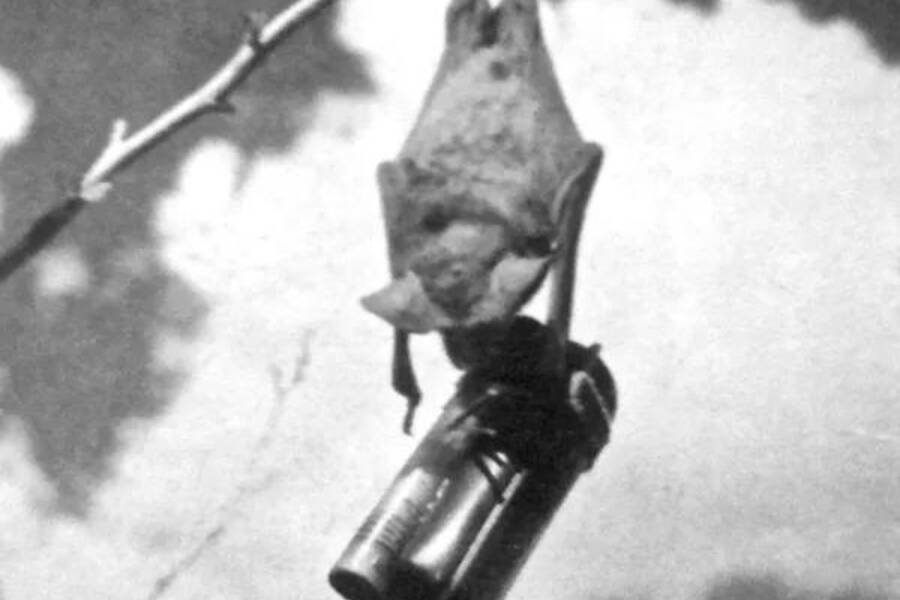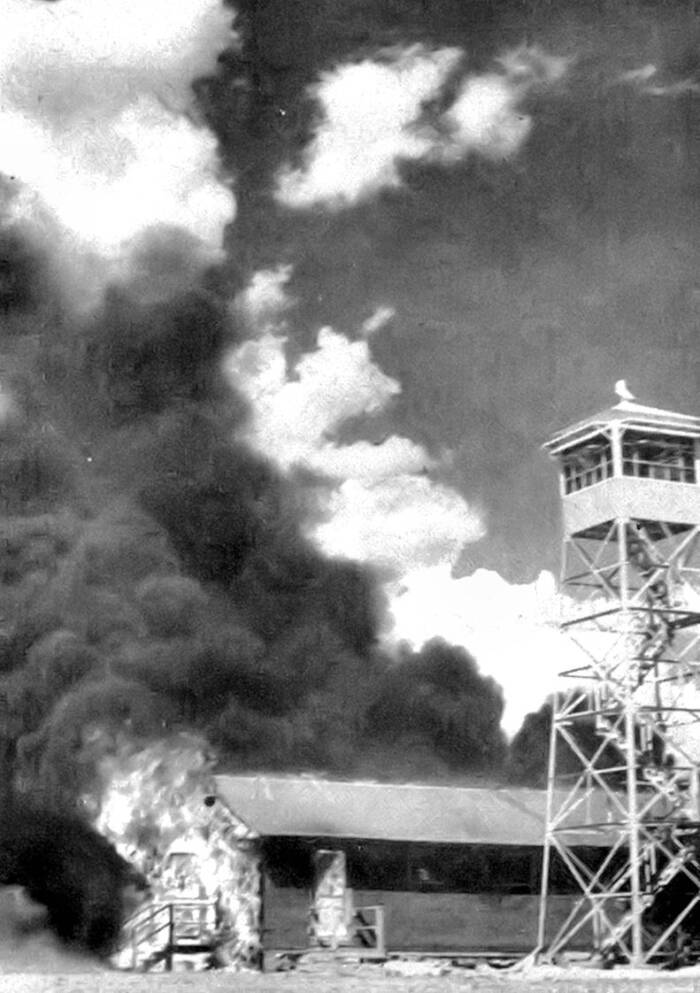Project X-Ray: Strapping Bombs To Live Bats To Attack The Japanese

U.S. Army PhotoThe U.S. military planned on outfitting Mexican free-tailed bats with small, timed incendiary bombs.
World War II was an experimental time for warfare. Obviously, it culminated in the creation of the atomic bomb, forever changing the landscape of international relations. But before the atomic bomb, the U.S. military toyed with the idea of another explosive weapon: the bat bomb.
But this was nothing like one of Batman’s bat-themed gadgets. This bomb involved very real bats, carrying very real bombs. Dubbed Project X-Ray, this secret government operation ultimately blew up in spectacular fashion.
First conceived by Lytle S. Adams, a dental surgeon from Pennsylvania, the bat bomb idea came to him after a trip to New Mexico’s Carlsbad Caverns National Park, which just so happens to house a great number of bats. Adams, as it turned out, was also not a huge fan of bats, as intelligence historian Vince Houghton pointed out in his book, Nuking the Moon.
Adams soon wrote a letter to the White House in January 1942 proposing the idea. It begins: “I attach hereto a proposal designed to frighten, demoralize, and excite the prejudices of the people of the Japanese Empire.”
He goes on to describe bats as “the lowest form of life… associated in history with the underworld and regions of darkness and evil.” Adams later declares, “Until now reasons for its creation have remained unexplained. As I vision it the millions of bats that have for ages inhabited our belfries, tunnels and caverns were placed there by God to await this hour to play their part in the scheme of free human existence, and to frustrate any attempt of those who dare to desecrate our way of life.”
Adams’ letter concludes by saying that if the bat bomb could “rid us of the Japanese pests,” then the United States should erect a monument of the bat in its honor. Shockingly, the proposal was actually approved by President Franklin D. Roosevelt, and work on the bat bomb began.
Generally, the plan was to put the bats into a state of hibernation, transport them in chilled compartments, then equip them with timed incendiary devices that would go off after they had reached their destination. They were to be dropped by the thousands into Japanese cities, whereupon, the theory went, they would roost under the eaves of wooden and bamboo buildings, explode on the structures, and then burn the cities down.
A formal test of this proposed plan was carried out on May 15, 1943 at New Mexico’s Carlsbad Army Airfield Auxiliary Air Base, though it didn’t quite go as planned. The bats were accidentally released earlier than they were supposed to be, and they ended up burning down a barn and a general’s car.

Public DomainThe fire that broke out at the Carlsbad Army Airfield Auxiliary Air Base after the bat bombs were released.
Despite this, many higher-ups still wanted to go through with the explosive plan. The only reason that the bat bomb was never carried out is because Fleet Admiral Ernest J. King was told that the project wouldn’t be ready until mid-1945, and he didn’t want to wait that long.
Still, by that point, more than $2 million had been spent on the project — which is roughly equivalent to over $35 million today.





